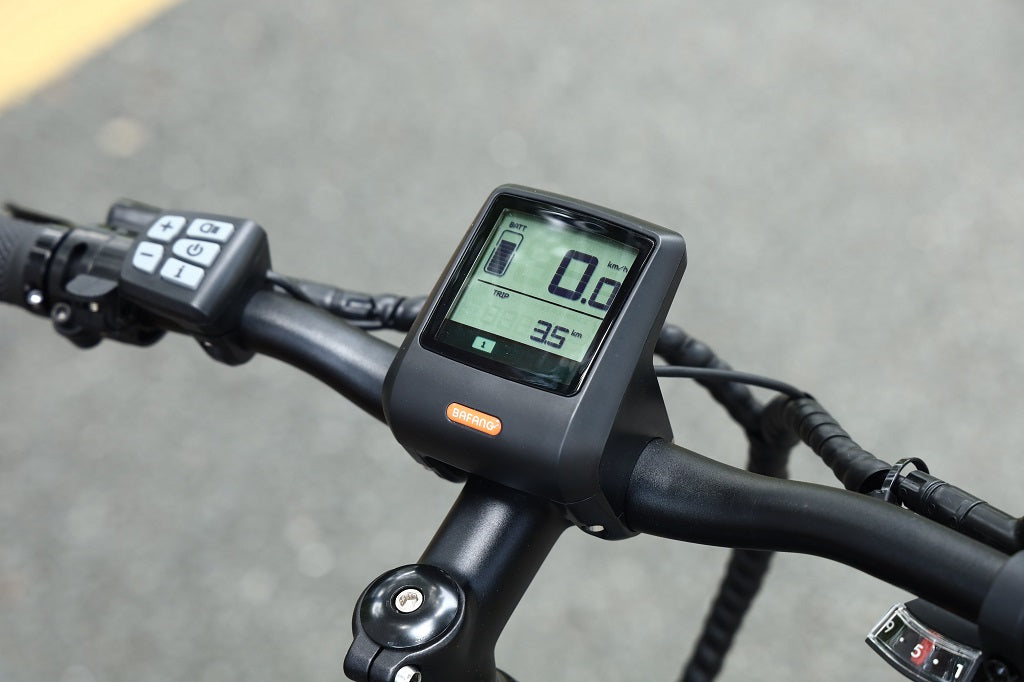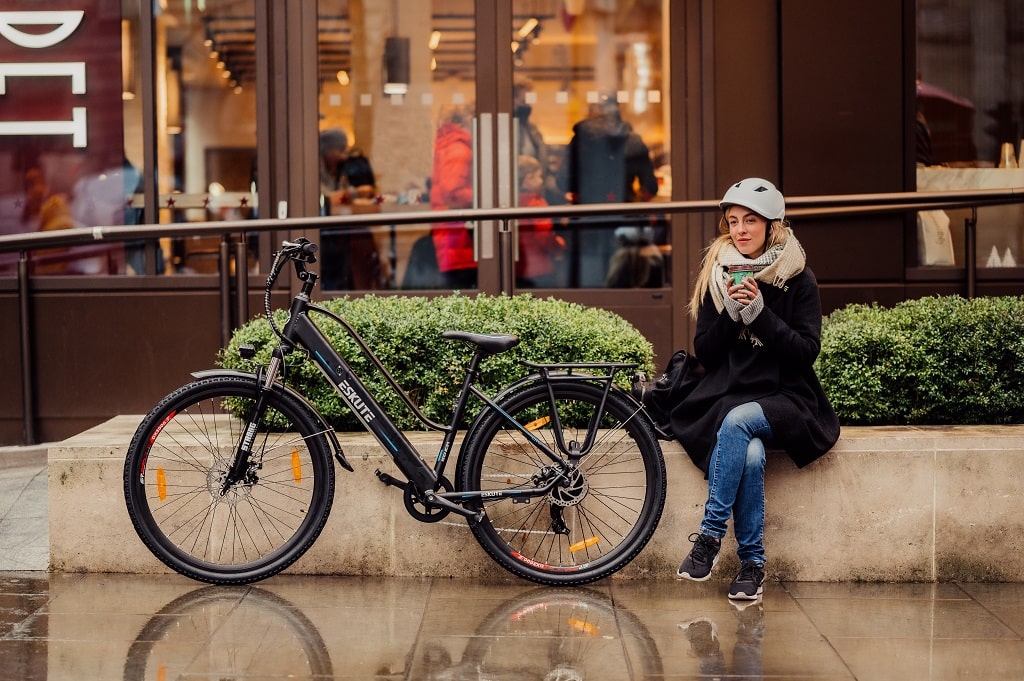Navigation
More and more people are getting E-bikes because of the incredible convenience they offer. However, these vehicles are yet to foresee worldwide acceptance at an institutional level. This may be because many people tend to raise concerns over the E-bike battery range, deeming it undesirable for daily commutes. E-bike range is a topic that comes up fairly frequently during E-bike conversations. Some E-bikers experience a decrease in their E-bike range after they first purchase the bike, which raises questions.
There are many reasons why you may be experiencing a decrease in the E-bike range. Most of these causes have to do with the battery. Over time, you may experience degradation in the E-bike battery. Fortunately, adhering to healthy riding habits and effective maintenance practices can prevent this from happening.
Simply by adhering to sustainable and easy riding habits, you can rid yourself of the hefty burdens of costly battery replacements. This article will provide you with tips to increase your E-bike range. These tips carry minimum to no costs, and you can start following them right now for a sustainable range.

From Eskute Voyager Pro
Store the battery indoors
The battery is an integral component of your E-bike. It is what differentiates the bikes from others. By storing electricity, it powers your motor, helping you ride peddle-free. When it comes to storing your E-bike battery, you must provide them with the ideal conditions.
E-bike batteries are like humans when it comes to storage requirements. They will sit best at a constant room temperature. If you store them in extreme hot or cold conditions, your battery will show signs of degradation.
Thus, it would be best if you stored the batteries indoors. Another common storing mistake that E-bikers make involves leaving the battery on charge overnight. This may not be as big of a problem as the BMS, or the battery management system should switch the power off once it is a hundred percent.
Nonetheless, a good tip would be to get an electric plug-in timer that turns the power off from the battery within the five or six hours you set it to. Additionally, if you are going to be storing the battery for a long time, do not leave it to 100 percent.
Instead, you can take it down to about 60 percent, which will help the battery last longer as it is in the most stable position. Your battery will lose voltage without even being connected to the bike. This “self-discharge” mechanism is a chemical reaction inside the battery and is highly responsive to storage conditions and temperatures.
Therefore, you must be considerate of where you store your batteries. High temperatures will speed up the rate of self-discharge. So consider storing them under moderate and dry temperatures, away from heat, extreme cold, and sunlight.
Charge it properly
Abiding by good charging habits can be instrumental for your battery range. Charging your battery is as easy as plugging it into a power source. The charging times for the battery vary depending on the different types of charger. Some brands offer fast chargers that charge the battery from 0 to a hundred in about three hours. It can also charge the battery from 0 to 50 percent in just about an hour.
It may take four to six hours for a full charge for general chargers. Your standard chargers that come with the bike are perfect for your regular charging. Another thing to consider is that most E-bikes have a lithium-ion battery. Running these batteries flat until they are dead can be detrimental to your battery in the long run and will affect its range due to faster degradation.
To make sure that you do not run out of battery while riding across long distances, you can carry a fully-charged spare battery along for long-distance commutes.
Mindfully Use the Assistance
Your bike's assistance level is in your control, and you can use it to your advantage. If you are riding on a lower level of assistance, your bike range will determine how you utilize the assist. For instance, if you are using a level one pedal-assist bike, then you may get about 50 percent assistance.
On the other hand, if you are using a level 4 pedal assist, you may be getting closer to 300 percent pedal assistance. You will most likely use a multiple of five or six-X battery life, which will impact the range of your E-bike.
Another way of using your assist properly involves power management and modes. To get the best range out of your e-bike, you should stay on eco-mode. If you think that eco-mode does not account for good assistance, then a good tip would be to start your ride off with the power switched off.
Then, once you have covered enough distance with the power turned off, you can switch on the assist with eco-mode. This will help you realize how much the motor assists you even on eco mode. You will benefit from staying away from turbo mode and boost mode as they can reduce your battery life significantly faster.
Pedal Choice
If you are a flat pedal-assist user and you want more efficiency from your bike, then you may want to consider swapping to pedals without clips. These pedals are slightly more efficient and also give you more power. Thus, switching to these kinds of pedals will help you see a rise in the MPG of the E-bike.

Keep it smooth
Flow is key to maintaining battery life. When riding the e-bike, you need to consider the surface and anticipate all the obstacles ahead. You must also think about maintaining a manageable speed when turning corners.
If you are not riding smoothly and constantly accelerating and decelerating the bike, you are putting variable stress on the motor and battery. Therefore, you want to make sure that you are riding smoothly and preferably at constant speed if you want to experience the best range your bike can offer.
Also, be considerate of how you use the power. Find out whether you are using the most amount of energy for going the least amount of distance. Many people have the assumption that the top speed is where you consume the most amount of power.
However, consuming the most power for the least distance travels begins at zero mph. In other words, accelerating up to high speeds takes the most amount of energy. If you can minimize the amount of power you use from zero miles an hour to your cruising speed, then you will extend your battery life quite a bit.
There are two ways to do this. You can not rely on just the motor at all and consider pedaling instead. Alternatively, you can use a normal or lower power setting when getting up to speed from a static or slow acceleration. Therefore, a smooth ride should consist of non-stop, constant acceleration without many breaks.
Make Sure that You are in the right Gear
This tip applies to both, mid-drives and hub motors, but in a different way. If you are shifting through the gears, make sure that you are riding on the right gear, for the right terrain. Every gear on the E-bike accommodates different surfaces.
For instance, low gear is generally good for riding up a steep hill. In other words, a high-quality climbing gear will make the bike more efficient. A mid-drive motor will put the motor into the power band, where it will be using less power for the distance you are traveling.
In a hub motor E-bike, the motor is not going to notice any difference, but you are. If you make it easier for yourself to pedal, you will be putting more power on the ground, and the motor will be doing less work because of it.
Thus, ensure that you are using the appropriate gear whether you are going uphill, downhill, or straight. A general rule would be to maintain a cadence of about 80 to 100 rpm. This reduces stress on your E-bike motor, and less stress ultimately means less battery power consumption.
You can also opt for a larger cassette or change the chain-ring to a larger one for efficient cadence. Cadence refers to spinning the cranks around, and every E-bike comes with a cadence rule.
Check your tyre pressure
The tire on your E-bike is the first point of contact your bike makes with the ground. Having optimum air pressure for the tire is therefore essential. It affects your grip, comfort, control, and, most importantly, your range. Bear in mind that the tire pressure requirements will vary according to the type of E-bike you are riding.
In general, the higher your tire pressure, the more efficiency you get while on the E-bike. If you are a recreational rider and love urban riding on pavements and roads, maximizing tire pressure can be beneficial. Unlike car tires, E-bike tires will lose pressure more quickly, so make sure to pump them more often.
When it comes to off roads, you need to have the tire set to the correct pressure. Having it set to the optimum pressure will allow it to roll over roots, rocks, and puddles. In other words, overinflating the tires when riding over rough terrains will lead to a loss of traction.
If the tire pressure affects E-bike’s traction, this means that the battery will have to work harder to push the bike forward. Thus, if the bike is breaking traction, you can expect the battery life to run out faster than normal.
Roll resistance for flatter and smoother surfaces decreases with less tire pressure. While for mountain biking, attaining excellent roll resistance requires you to attain perfect tire pressure.
Roll resistance refers to how easily your bike tires roll on a specific surface.
Choose the Right Tires
The best tires to increase the E-bike range refer to the lightest and fastest rolling tires. It would be best if you made tires that are the most suitable for what you ride across. By choosing a light weight tire, you will reduce the stress on your e-bike motor and save some battery power.
If you already have a very light weighted tire on your e-bike, you can also consider switching to a latex inner tube or setting up a tubeless tire setup. These measures allow you to reduce the rolling resistance and the electrical stress on the batteries.
Lubricate the chain properly
Chain lubrication is essential for your drive train. The E-bike chain directly impacts the gears, pedaling efficiency, and the derailleur. Poor chain quality increases resistance, having the battery work more to move forward, decreasing the overall range.
Offload heavy items
If you are riding the bike on flat ground, this may not be much of a problem. However, if you ride over steep terrains and hills, weight can be a huge factor in battery life. The amount of energy the battery consumes to push you against gravity is vastly different from what it uses on a flat surface.
It is always advantageous to offload heavy items from your E-bike if you want to conserve energy, regardless of the surface. Overall, added weight has a v significant impact on the E-bike range, whether it is the rider's weight or the cargo that you carry.
Keep it well maintained!
This last tip encompasses all the tips mentioned above and highlights the importance of maintaining your E-bike. Your correctly functioning bike will last much longer than a poorly maintained one. One key thing to note is that your bike should not have any worn-out brakes.
This can be both, disc brakes or rim brakes. Furthermore, you want to make sure that the bike's bearings run nice and smooth. To ensure that they do, you have to keep them lubricated at all times.
Concluding Thoughts
As you can see, it does not take much to increase the E-bike battery range. All it takes is a little consideration and effort. However, once you implement the tips mentioned above, you will add extra miles to your E-bike commutes.











Leave a comment
This site is protected by hCaptcha and the hCaptcha Privacy Policy and Terms of Service apply.